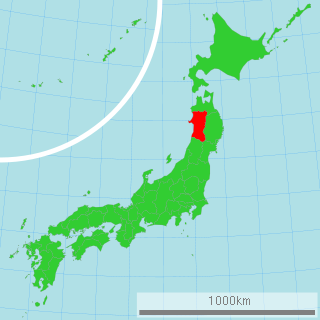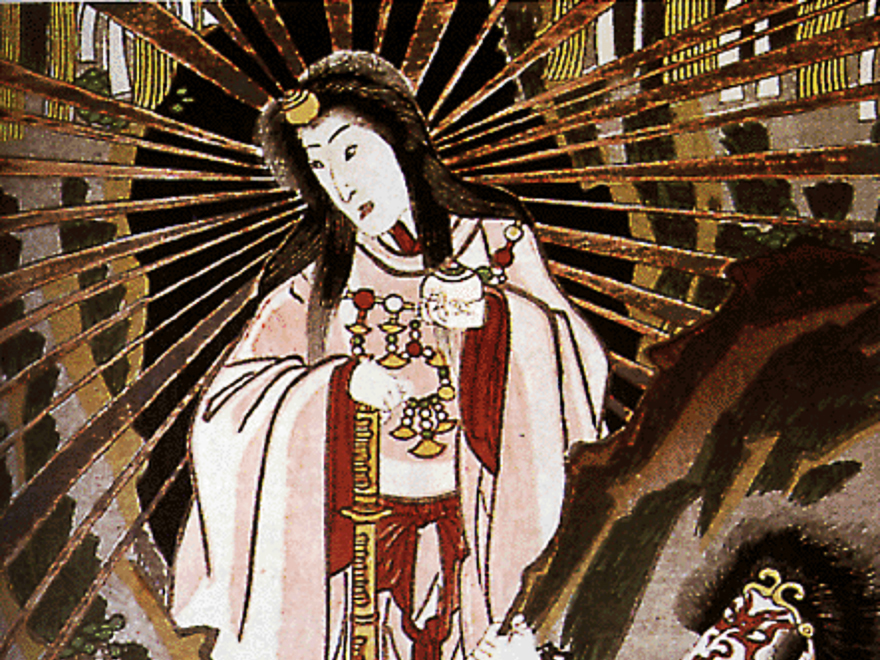
Tengu are a type of legendary creature found in Japanese folk religion and are also considered a type of Shinto god (kami) or yōkai. Although they take their name from a dog-like Chinese demon (Tiangou), the tengu were originally thought to take the forms of birds of prey, and they are traditionally depicted with both human and avian characteristics. The earliest tengu were pictured with beaks, but this feature has often been humanized as an unnaturally long nose, which today is widely considered the tengu's defining characteristic in the popular imagination.
Kamen Rider V3 is a Japanese tokusatsu television series. It is the second installment in the popular Kamen Rider Series, and the direct sequel to the original Kamen Rider. It was a joint collaboration between Ishimori Productions and Toei, and was shown on NET from February 17, 1973, to February 9, 1974.

Ultraman Max is a Japanese Tokusatsu series produced by Tsuburaya Productions and Chubu-Nippon Broadcasting Co., Ltd.. Released as the 19th Ultra Series overall, it aired on July 2, 2005 to April 1, 2006. The show aimed to return to the true formula of new monsters every week and being a fast paced show like previous series with the exception of Ultraman Nexus. The show is full of homages to past series by having three of the original cast members from the first Ultraman series being featured in an episode, updated versions of classic monsters like Red King, Eleking and Pigmon among others. One unusual episode (#29) revolves around the filming of the 1964 program Ultra Q which was the predecessor to the first Ultraman show in 1966. Two actors from that show appear as themselves. On October 10, 2014, Crunchyroll announced that the series would be broadcast on their streaming service starting on October 17, 2014 in the US, Canada, Latin America, UK, Australia, and New Zealand.
Kamen Rider X, translated as Masked Rider X, is a Japanese tokusatsu superhero television series. It was broadcast in 1974 on NET, now known as TV Asahi. It is the third entry in the Kamen Rider Series of tokusatsu shows. It starred Ryo Hayami in the title role.
Kamen Rider Stronger is a Japanese Tokusatsu television show. It is the fifth entry in the Kamen Rider Series, the show was broadcast on TBS and MBS from April 5, 1975 to December 27, 1975. Stronger is a co-production between Ishinomori Productions and Toei, and was created by Shōtarō Ishinomori.

Kamen Rider Super-1 is a Japanese tokusatsu superhero television series. It is the seventh installment in the Kamen Rider Series. The series was broadcast on the Mainichi Broadcasting System from October 17, 1980 to October 3, 1981. The series was a co-production between Toei and Ishinomori Productions, and was created by Shōtarō Ishinomori.

Sekai Ninja Sen Jiraiya is a Japanese television series that aired on TV Asahi and its affiliates from January 24, 1988 to January 22, 1989, lasting 50 episodes. It was the seventh installment in Toei's Metal Hero Series franchise of live-action superhero shows and the last of the Showa era. The series centers around a young ninja master named Toha Yamaji, who must face against numerous ninja masters from different parts of the world by donning a special armor to become his alter-ego Jiraiya.

Special Rescue Exceedraft is the last part of the Rescue Police Series trilogy in Toei Company's Metal Hero Series franchise of superhero TV series. It was aired in Japan from February 2, 1992 to January 24, 1993. The series was initially conceived as taking place in a new continuity, leading to weaker ties to Solbrain and Winspector.

Transformers: Song Universe is a five disc compilation soundtrack box set from the Transformers franchise. It was released by Columbia Music Entertainment, inc. on August 8, 2007 in Japan only.
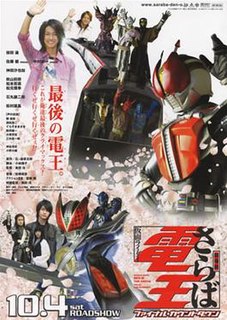
Saraba Kamen Rider Den-O the Movie: Final Countdown is the third tokusatsu superhero film adaptation of the popular Kamen Rider Series Kamen Rider Den-O, and the last of the Den-O films, following Kamen Rider Den-O: I'm Born! and Kamen Rider Den-O & Kiva: Climax Deka. The script was written by Yasuko Kobayashi and directed by Osamu Kaneda, both of which have worked on the previous Den-O films. Final Countdown was released on October 4, 2008. As of September 26, the film has sold 66,000 pre-sale tickets. It opened at #2 in Japanese theaters on its opening weekend only behind The Devotion of Suspect X. The film was originally intended to be the end of Den-O, until the development of the Cho-Den-O Series.

The Shinkengers are the fictional protagonists featured in the 33rd Super Sentai Series Samurai Sentai Shinkenger. The Shinkengers existed for eighteen generations to protect the world from the Gedoushu, demonic beings from the Sanzu River.

Kamen Rider W, is a 2009-2010 Japanese tokusatsu drama, the eleventh series in the Heisei period run of the Kamen Rider Series. It premiered following the finale of Kamen Rider Decade on September 6, 2009, and aired alongside Samurai Sentai Shinkenger in TV Asahi's Super Hero Time programming block. Following Shinkenger's finale, it aired alongside Tensou Sentai Goseiger, until W concluded on August 29, 2010. The series is described as the "Heisei Kamen Rider 10th Anniversary Project: Fall Campaign". In the first episode of Kamen Rider Fourze, W is revealed to be in the same continuity as the original Showa timeline, making it the first series to do so since Kamen Rider Agito.

Heisei Rider vs. Shōwa Rider: Kamen Rider Taisen feat. Super Sentai is a Japanese film featuring a crossover within the Kamen Rider Series, as well as the Super Sentai series. Scheduled for release on March 29, 2014, characters from all of the Kamen Rider Series, as far back as 1971's Kamen Rider up through the currently airing series Kamen Rider Gaim will appear, with many of the original actors reprising their roles, including Kamen Rider's Hiroshi Fujioka. The film serves as a 15th anniversary commemoration of the Heisei period run of the Kamen Rider Series.
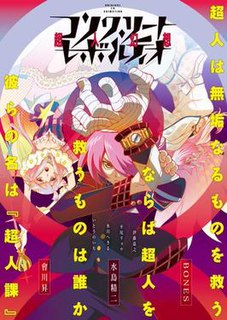
Concrete Revolutio: Superhuman Phantasmagoria is a Japanese superhero anime television series produced by Bones, directed by Seiji Mizushima and written by Shō Aikawa and Masaki Tsuji, with character designs done by Yoshiyuki Ito. It began airing in Japan in October 2015. A second season debuted in April 3, 2016, and included Gen Urobuchi and Kazuki Nakashima in the writing staff.
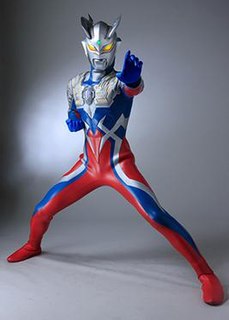
Ultraman Zero is a fictional character from the Ultra Series. He first appeared in Mega Monster Battle: Ultra Galaxy before starring in his own film Ultraman Zero: The Revenge of Belial. Lacking a TV series of his own, he became the main navigator of Ultraman Retsuden/Shin Ultraman Retsuden and made guest appearances in subsequent Ultra Series media.

